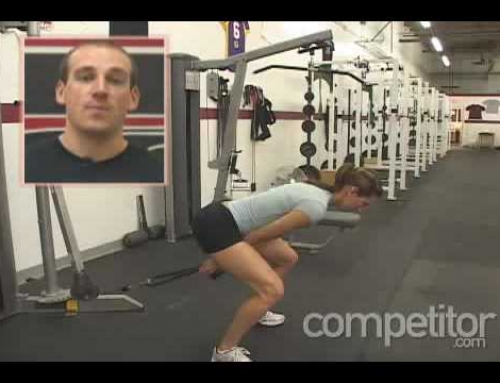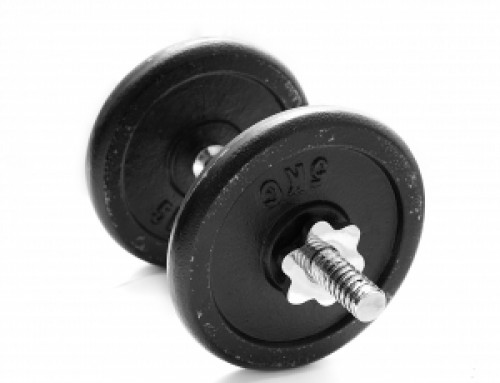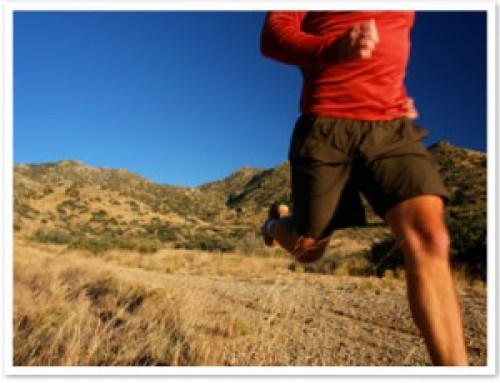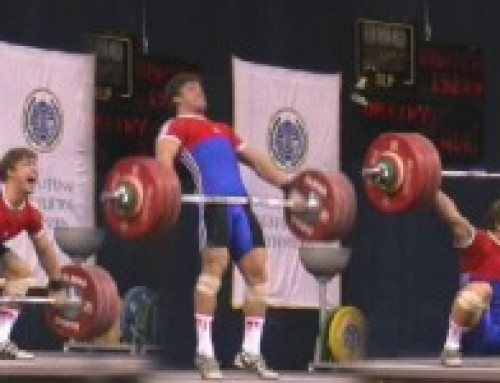 It’s time to wrap up our earlier conversation about Olympic lifting and how we can incorporate it’s elements into our tennis fitness regiment. Today we’ll look at one of the most complex lifts and break it down into smaller elements that we can more easily apply to our own routines.
It’s time to wrap up our earlier conversation about Olympic lifting and how we can incorporate it’s elements into our tennis fitness regiment. Today we’ll look at one of the most complex lifts and break it down into smaller elements that we can more easily apply to our own routines.
Why Learn the Clean and Jerk?
The clean and jerk is a two part lift where the bar rests on the ground and the lifter brings it up to shoulder height in the first part, then extends the weight overhead to complete the lift. To be properly learned, the lift needs to be broken down to its base components, and this is where we as tennis players can make use of these smaller, less complex lifts. Olympic lifters train for years to perfect this lift and attempt to raise as much weight as possible using the strictest of forms. These athletes are not only immensely strong, but also extremely flexible and powerful. It is important to note the distinction between strength and power. Raw strength is just the ability to move something heavy while power allows the weight to be moved quickly.
In tennis, we want to be powerful athletes, unencumbered by large percentage of muscle/body mass, but still able to produce power in short amounts of distance. Power in tennis comes from the ground up, so developing the body in a manner that will allow the maximal transfer of power from the legs to the torso, then the arms, is critical if we want to be able to hit the ball harder or impart more spin on the ball.
 Breakdown of the Movement
Breakdown of the Movement
Let’s look at the small movements that make up the whole exercise. There is the ‘clean’, in which the weight is rapidly lifted from the floor to shoulder height, then the lifter squats with the weight and then explodes up to a standing position with the bar at chest height. The ‘jerk’ starts with the knees bending slightly to create momentum, then the bar being thrust overhead and the feet splitting with one gong forward slightly and one falling back to resemble a lunge position. The lift is completed by surging the weight upward using the hips and drawing the feet back under the shoulders. This is perhaps difficult to envision, so the whole movement can be seen here: http://www.exrx.net/WeightExercises/OlympicLifts/CleanAndJerk.html
Our goal is not necessarily to be able to complete the entire movement, but to glean strength and power gains from the smaller elements that make up the whole exercise. So what are these smaller elements and how do we go about performing them? Complete instructions can be found by following the following link, so I will only give a cursory overview of the steps and look into what results we can expect from performing them.
Learning and Breakdown into smaller elements: http://findarticles.com/p/articles/mi_m1608/is_3_16/ai_54037011/
The Clean
This element is great in and of itself, and can even be broken down into smaller parts such as the hang clean and the front squat. Performing the clean is an excellent compound movement that recruits the back, arms, shoulders, quadriceps, calves, and hips. Compound movements such as the clean enable more muscle groups to be worked at one time, and increase balance, power, and speed, as well as cardiovascular endurance. This is a lot of benefit just from one lift! It is best to start out with very light weight, say not over half of your body weight. We want to focus on form here, and developing the proper form will work the muscles more efficiently and increase the level of balance needed to master the lift with heavier weights.
The clean will develop the ability to generate power from the legs and hips and transfer that power into the upper body. The legs and back are strengthened, creating a solid base from which to swing at a tennis ball. Conditioning the body to create upward momentum from the leg and hip area is crucial to generate the forces needed to impart topspin and drive on the ball. When performed with lighter weights in the higher rep range, the clean is an excellent cardiovascular exercise as well, challenging the body to produce power when fatigued. This will assist in being able maintain the ability to hit hard even deep into long rallies.
 The Jerk
The Jerk
Learning this part of the lift can really add some stability to the shoulder and back, and will develop lower body balance while the upper body is under the stress of a load. The exercise of lifting the weight overhead in an explosive manner create not only strength in the shoulder and arm areas, but challenge the balance and stability of the hip area as well. This is a great way to learn to keep the hips and legs in balance while the upper body is exerting force, similar to what is involved in hitting an overhead or making a forceful groundstroke.
Like I mentioned previously, the intent in looking at the Clean and Jerk is not to turn us into Olymipic behemoths, but to develop strength and power so that we can be faster and perform better on the tennis court. If you’re serious about your tennis and health in general, you should be taking steps off of the court to offset the beating that your body takes on the court. Modern tennis can take a toll on almost the entire body, and I’m sure that we all want to be able to play this great sport as long as possible. Hopefully incorporating some of these time proven exercises into your fitness regimen will make you a more capable tennis player. If you put in the work on the back side, you’ll build the proper foundation on which Ian or your local pros can set their tennis instruction on. I guarantee you’ll be the stronger, fitter player if you master some of these elements, and today, that is half the battle.







